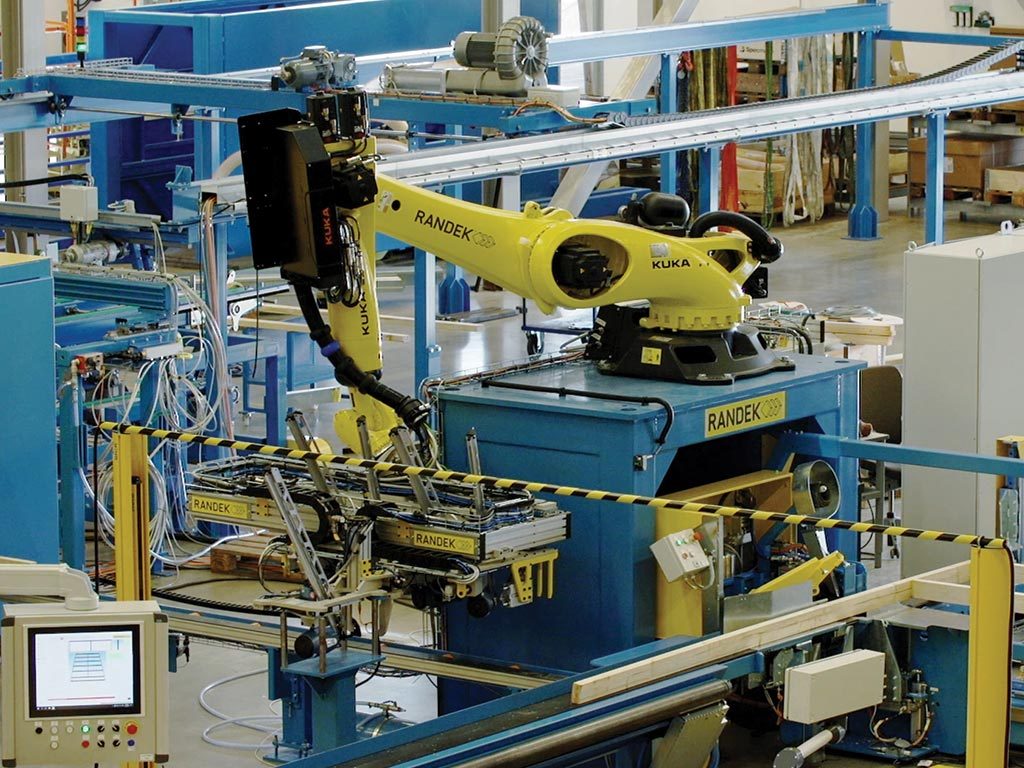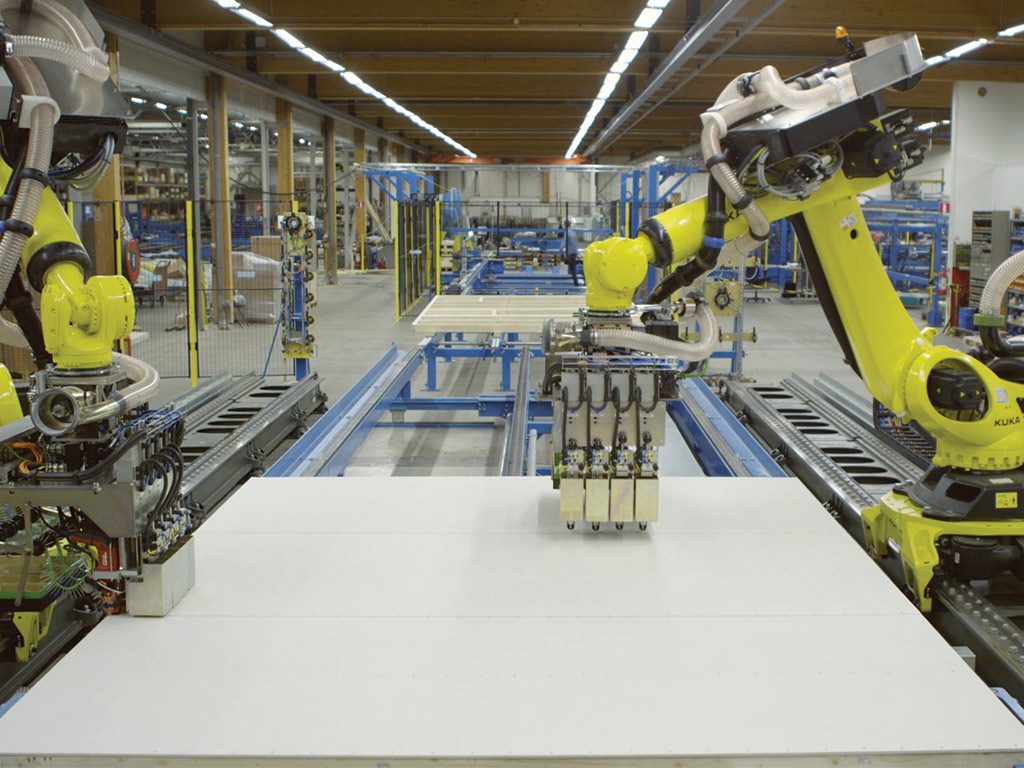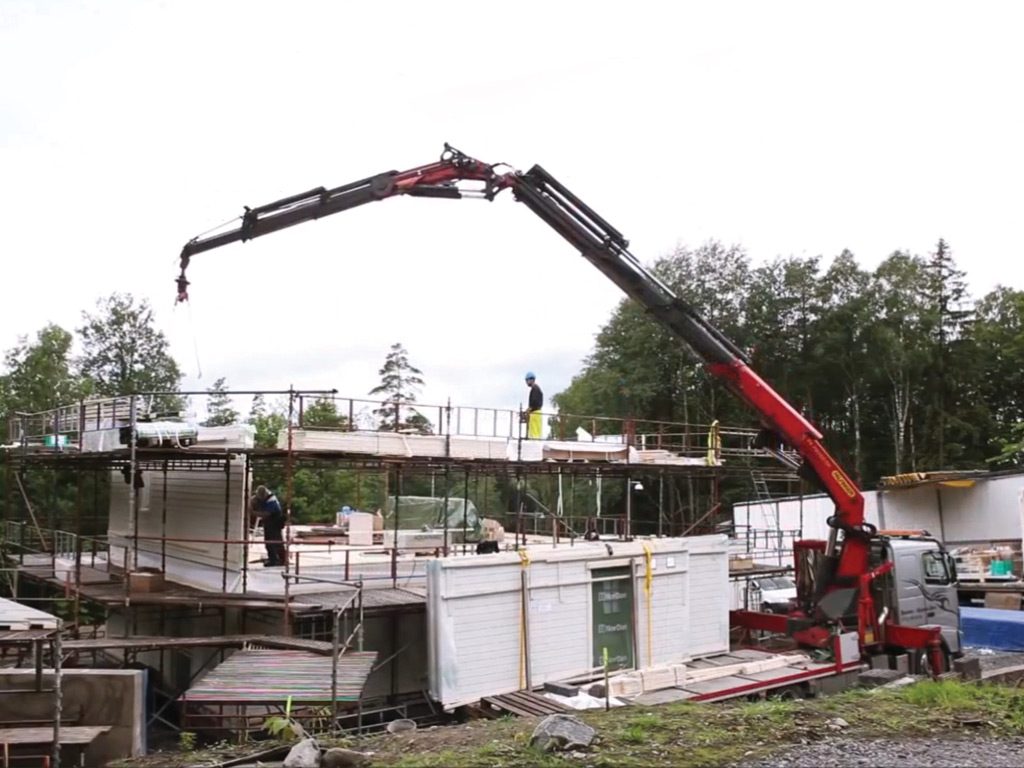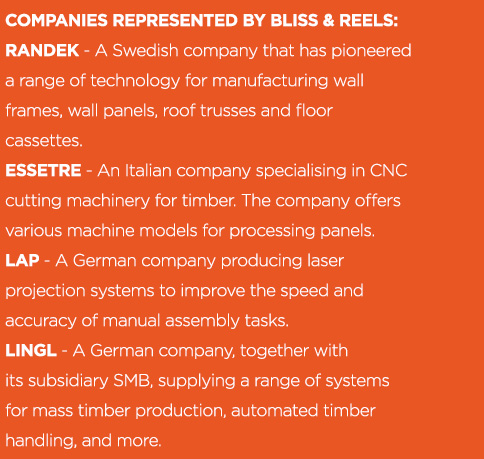

FOUNDED IN 1948, BLISS & REELS IS A PRODUCTION MACHINERY SALES AND SERVICE COMPANY OPERATING IN AUSTRALIA AND NEW ZEALAND. SALES MANAGER JASON REINTS SHARES HIS INSIGHTS ON THE LOCAL OFFSITE MARKET AND THE IMPETUS FOR GROWTH PROVIDED BY TECHNOLOGY.
In your view, what are some of the most relevant technologies for the local offsite sector?
Bliss & Reels’ first major customer in the prefab industry was Universal Trusses in Canberra, where we supplied Randek’s AutoEye truss system, a highly automated machine that makes use of digital vision system technology to automatically apply nail plates. It’s been a major benefit to the company, simplifying its production and supporting significant growth.
We’ve been actively promoting panelised house building for several years now. Panelisation significantly improves productivity and build times in residential construction. If we look at construction times of detached housing, with panelisation, once the slab is down, the lock-up stage can be achieved in less than one week, and potentially the whole build completed in four to six weeks.
Dr Ehsan Gharaie from RMIT has done some great work looking at the productivity of the residential building industry, showing that over the past 30 years the average build times are five to eight months, depending on activity levels. So panelised building has the potential to cut construction times by a huge margin and maintain these build times during peak periods for the industry; a big benefit for the offsite industry, builders and home buyers alike.

Our partner Randek is a Swedish company which has been supplying systems for panelised building for over 50 years. In Sweden, panelised building is used in over 80 per cent of detached home builds. The Swedes use timber frame construction similar to us, albeit with larger timber, so this makes their systems easy to adapt for our requirements.
Another key benefit of the panelised building approach is the flexibility to apply it to a range of building typologies, such as detached houses, town houses, and mid-rise buildings. Prefab frames are already being used extensively; the key is to add value with wall frames. Automation is a significant area of the market; the introduction of Randek’s ZeroLabor Robotic system has gained a lot of attention. It is a flexible robotic system for making closed wall panels. The Randek ZeroLabor Robotic System reads CAD data files and completes a large variety of tasks without supervision, all done within a compact footprint that was not possible before. More recently, Randek has been focussed on the latest generation of its AutoWall system. The system has been optimised for production of wall frames with noggins. The opportunity to maximise the benefit of all these systems is with improved designs, optimised for manufacturing.
What current developments are you noticing in the local offsite sector?
Put simply, investment in manufacturing technology. We’re noting a greater shift towards automation. Manually producing every house as a one-off, onsite, using transient sub-contractors, increases the complexities of managing quality and construction time. An integrated approach between the design/offsite manufacturing/onsite construction of the house, use of 3D CAD / BIM data (Building Information Model), and CAD-connected machinery, is how industry productivity can be advanced. Originally when we would talk to people about panelised house building, it was a foreign concept, something happening in Europe but not applicable to the local market. Awareness and understanding of the approach has grown dramatically in recent years.
Can you share your views on the pain points vs. opportunities for local offsite/MMC?
Put simply, 3D CAD / BIM & advanced manufacturing. Advanced manufacturing is where the 3D CAD / BIM model interfaces directly with automated machinery. So in order to use the latest automation, builds need to be modelled in 3D CAD / BIM software. To gain the most out of this design work, efficiency in manufacturing needs to be considered (in other words, DFMA – Design For Manufacturing & Assembly). Because of this we see the implementation of 3D CAD software packages as a key enabler for the building sector to move ahead with offsite construction.

By contrast, today many local building companies are using 2D CAD, or architectural packages that don’t generate the data required for automated manufacturing. However, there are many good software packages that can do this; some of the vendors include HSBCAD, CADWork, SEMA, Vertex and more.
The ECI model (Earlier Contractor Involvement) is a major step in the right direction for larger projects. This allows DFMA to be considered upfront, maximising the benefits of offsite construction. Mass timber has a real buzz around it currently (in particular CLT panels & glulam beams). European timber companies have led the way in the mass timber area, so there are some very mature systems available from European machine builders. Our CNC processing partner in this area demonstrates this point. Essetre has been making woodworking machinery 40 years, 5-axis machining centres for 25 years, and 15 years building mass timber / carpentry machinery.

What are your longer term ambitions for the offsite/ MMC sector?
The game changer in residential construction will happen when more mainstream builders adopt a panelised approach as part of their offering; particularly when this has been optimised for manufacturing. This brings the benefits in terms of cost, time and quality that are frequently talked about, but yet to gain traction in market. In terms of build numbers, the top HIA data lists just under 75,000 starts in 2017-2018 from the largest 100 HIA builders nationally, so a five per cent uptake of panelisation for those builders would be almost 4,000 builds per year. If the offsite/prefab sector could see a five per cent uptake of panelised building in the next few years, this would be a huge achievement for the industry.
“The game changer in residential construction will happen when more mainstream builders adopt a panelised approach as part of their offering; particularly when this has been optimised for manufacturing. This brings the benefits in terms of cost, time and quality that are frequently talked about, but yet to gain traction in market.” Jason Reints, Bliss & Reels.■

